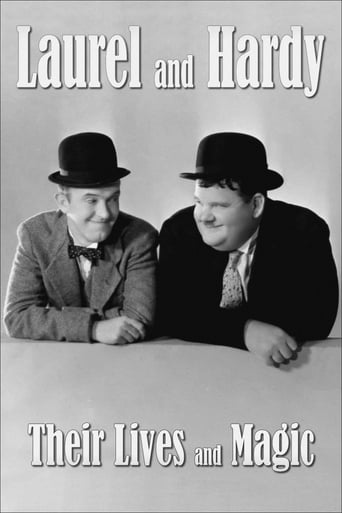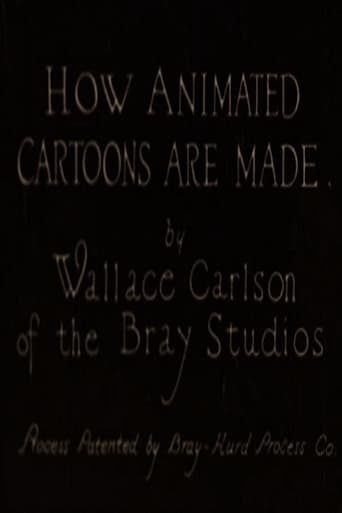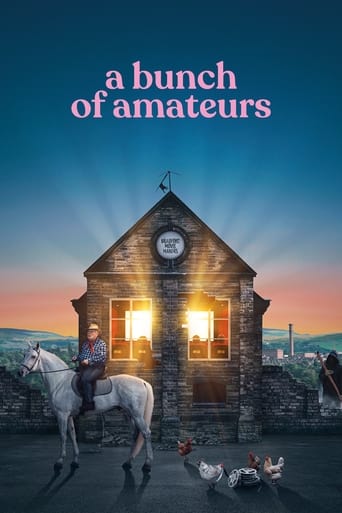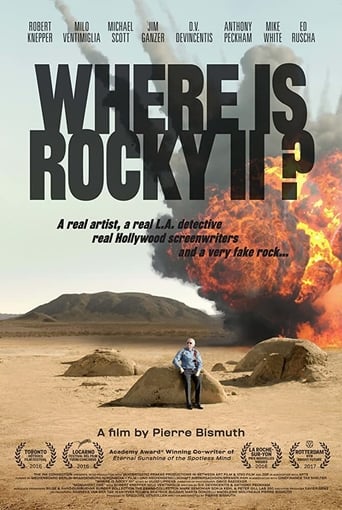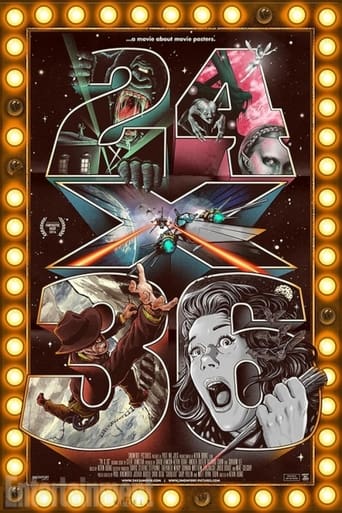
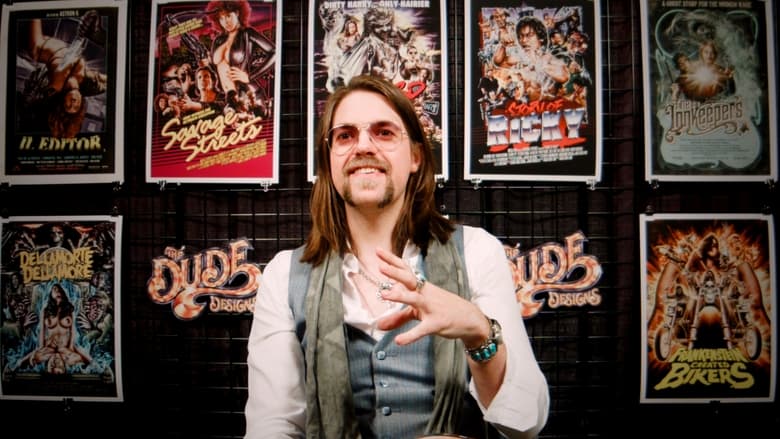
24×36 (2016)
A documentary exploring the birth, death and resurrection of illustrated movie poster art. Through interviews with a number of key art personalities from the 70s and 80s, as well as many modern, alternative poster artists, “Twenty-Four by Thirty-Six” aims to answer the question: What happened to the illustrated movie poster? Where did it disappear to, and why? In the mid 2000s, filling the void left behind by Hollywood’s abandonment of illustrated movie posters, independent artists and galleries began selling limited edition, screenprinted posters — a movement that has quickly exploded into a booming industry with prints selling out online in seconds, inspiring Hollywood studios to take notice of illustration in movie posters once more.
Watch Trailer
Cast
Similar titles
Reviews
I cannot think of one single thing that I would change about this film. The acting is incomparable, the directing deft, and the writing poignantly brilliant.
A lot of perfectly good film show their cards early, establish a unique premise and let the audience explore a topic at a leisurely pace, without much in terms of surprise. this film is not one of those films.
The story, direction, characters, and writing/dialogue is akin to taking a tranquilizer shot to the neck, but everything else was so well done.
A clunky actioner with a handful of cool moments.
A film of two halves. We see the development of film posters as advertising to sell movies. It was not regarded as art. We see the work of notable poster artists of the recent times. John Alvin, Richard Amsel, Drew Struzan. People who worked on Jaws, Star Wars, ET, Raiders of the Lost Ark, Blade Runner, Alien.In the 1990s, the art of the film posters declined. We got floating heads lit in various ways. The film posters showed you the stars of the film, such as Face/off. Horror movies were no different. Exhibitors, video shops wanted the faces of the stars. Even if a director wanted some fancy art work he would discover that power ultimately lay with the film executives and they all went for something identical.The second half of the film was about money. The value of old film posters, the rare ones exchanging for thousands and those companies recreating posters for classic films whether it is done legitimately or not. Some companies such as Mondo have been instrumental in the resurgence of movie artwork.An interesting, novel subject matter but I felt lacking somewhat. I wanted more on the history of the film poster.
Finally got round to watching this on Sky last week and loved it, was nice to here artists talking about there work and likewise from the fans,For someone new to the print hobby it gave a fair bit of information about the hobby itself.I liked that it didn't just focus on official prints but had a good mix of both official and unofficial work.
A fascinating subject poorly documented.Some horrible audio at least distracts from the complete over use of adobe after effects. Almost all the interviews are unbelievably badly recorded, it almost seems like they forgot to bring a mic and just did it all in camera.Some of the animated posters are a nice idea but it gets old quickly.Still watchable but could do with a few fixes here and there.
A documentary exploring the birth, death, and resurrection of the illustrated movie poster.Early on, the film tells us a great truth: posters are often more iconic than any one scene of a movie. "Jaws" comes to mind, as do others, where it is the poster that has become the popular image. And yet, do any of these names sound familiar: John Alvin (1948-2008), Bob Peak (1927-1992), Reynold Brown (1917-1991), Richard Amsel (1947-1985), Drew Struzan (b. 1947). Probably not, though they were the giants of the poster art world.The studios saw the posters as advertising, not art. And while that is true in the strictest sense, it left many great artists unappreciated. More often than not, no signatures were allowed on the posters, and the work from the earliest years in now anonymous. Who painted the great posters of Frankenstein's monster? We will never know.As anyone who lived through the 1980s-1990s knows, in the late 80s, there was a shift to photography, with the idea that artistic posters might suggest an animated film. This claim that pops up again and again, and sounds absurd on its face, but one scene actually has a focus group looking at posters and making the exact same comment.The "art" in poster art took a dive in the 1990s, leaving us with "floating heads" and the same layout was used over and over again. For horror fans, this was evident in the teen horror films ("Scream", "Last Summer") and has not really stopped. Even the more creative posters today seem to rehash the same poses and images over and over and over. Is poster art dead? No. Because "24x36" covers a longer history, a new trend. Not just the history of lithographs and the decline of posters, but its new resurgence thanks to the rise of Mondo, its eccentric leader Rob Jones, and the new art from specialty Blu-ray labels like Scream Factory and Arrow Video. And this generation of artists, such as Gary Pulling, are not anonymous."24x36" is a much-needed piece of film history. There are many biopics, and there have been focuses on the special effects. Those behind the scenes are finally getting their due. But what of the painters and sketch artists who really drove the images into our collective, pop culture imagination? Now their story can be told!


